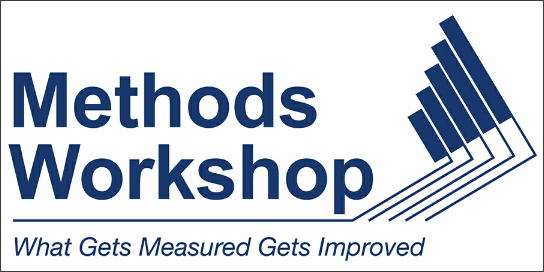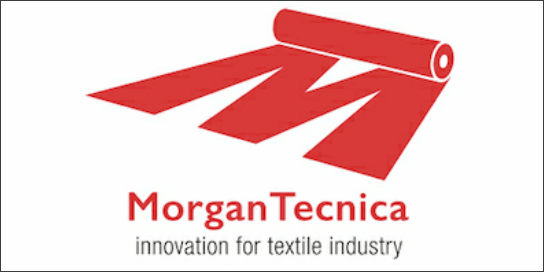
Posted November 30, 2016
(Editor’s note: SPESA, the Sewn Products Equipment & Suppliers of the Americas, hosted two back-to-back conferences in San Antonio this month. This week, we review the Advancements in Manufacturing Technologies Conference. Last week, we published a recap of the annual Executive Conference.)
By Devin Steele (DSteele@eTextileCommunications.com)
SAN ANTONIO – Members of the sewn products industry gathered here for the Advancements in Manufacturing Technologies Conference, the seventh in the series.
The event is designed to help manufacturers of sewn products improve their quality and manufacturing efficiencies while, at the same time, reducing their lead-times required for production. The conference showcased the technical knowledge and expertise of leading equipment and technology suppliers in a non-commercial, educational-only event.
“We want you to leave here believing the U.S. can be competitive already,” said moderator Dr. Mike Fralix of [TC]2, in welcoming attendees. “There are things that are moving back and we’re competing, and a lot of the key to that is technology. But just as important as technology is process. How do you take advantage of the technology? Some of this technology is going to be disruptive.
“Have you been disrupted yet?” he continued. “That’s one of the things we want to do – disrupt you.”
Presentations
Global collaboration in development process
Savannah Crawford, chief collaborator at L.A.-based Tukatech, Inc., a provider of fashion technology solutions, opened the conference by covering, “Exploring Collaboration in a Globalized Apparel Product Development Process.”
“In a global environment, oftentimes each step in the development process happens in a different part of the world,” she said. “What was once a very personal and effective process has become segmented, confusing and inefficient.”
To make product development work in a global environment, we must look back to what worked before, Crawford said: Everyone in one room, looking at the same thing. This is replicated in a digital environment to work in a globalized process using 3D virtual sample-making software and Cloud collaboration, she said.
The latest advancements in 3D virtual sample making are aimed at improving the sharing of 3D virtual samples between vendors and manufacturers, and designers and merchandisers, she continued. This is achieved with Cloud collaboration. Rather than emailing these virtual samples and making comments back and forth through Outlook, samples are uploaded to the Cloud platform, she added.
A real ‘Threaducation’
Phil Freese, director of Global Retail Solutions at American & Efird, Mount Holly, N.C., discussed, “Quality and Profitability Must Be Engineered into Your Products, Starting With the Sewing Thread.”
Calling his presentation a “Threaducation Workshop,” he pointed out that you cannot inspect quality into your products – quality must be engineered into the product for the best profitability and customer satisfaction possible.
To that end, selecting quality thread is important, as it can help minimize repaired seams, skipped stitches, open seams or seams failure and seam puckering, Freese said.
A high-quality sewing thread has many advantages, he said, including reduce sewing interruptions, repairs, and payback time on equipment; improve productivity, quality, profitability; lower overhead; and lower your carbon footprint.
SPESA Advancements in Manufacturing Technologies Conference
Disruptive technologies driving reshoring effort
 |
|---|
 |
 |
 |
 |
 |
 |
 |
 |
 |
 |
 |
 |
 |
 |
 |
 |
 |
 |
Freese went on to explain the process of selecting the right thread based on their properties and end uses.
Later, he gave a presentation on how to make a sewing operation more efficient and profitable.
You must measure to improve
John Stern, president, Methods Workshop, LLC, Lake Worth, Fla., discussed how upfront labor costing can improve the bottom line.
“My slogan is ‘what gets measured gets improved,’ ” he said in opening his presentation.
He then went over a brief history of Standard Data, its evolution and where it is today, which can help companies become more productive, efficient and more of labor costs.
“Today the use of proven PMTS (predetermined motion time system) is the only way to meet the requirements for ‘right product’ at the ‘right time’ at the ‘right price,’ ” Stern said. “Predictive global benchmarked engineering systems are the ultimate weapon for success.”
Technology, automation aiding industry
Yoram Burg, general manager at CAD/CAM solution provider EFI Optimex (USA), went over the latest advancements in apparel and fashion product development.
The fashion industry has been changing dramatically over the past years, and customers have been changing their shopping patterns, he reminded attendees. As such, workflows are shorter requiring faster turn times with the ability to iterate and ideate sooner in the cycle, and utilization of technology has become a must in apparel design and product development, he said.
Technology already plays a role, and automation is playing a game-changing role, Burg said. And technology and automation will continue to aid the sewn goods industries, he added, before deep diving into many of these technologies and how manufacturers and retailers/brands are embracing them.
Supply chain visibility
Lenny Marano, director of Product Marketing, Gerber Technology, Tolland, Conn., presented “Remote Possibilities – Extending the Boundaries of Supply Chain Visibility.”
He covered the sharing of data across the value stream for varying users; how that same data is empowering new and different types of automation; and how visibility into this data is changing the game for how factories are managed and supported.
“About a year ago we spent some time with some smart folks at Duke University,” Marano said. “They narrowed it down to four customer types: 1) brand manufacturers; 2) brand marketers; 3) specialty retailers; and 4) mass retailers. And we added our own: contract manufacturers.”
He went on to explain each of those customer types, and covered the importance of empowering automation as well as visibility.
“We see the data on that side of the production chain from two perspectives: mass production and mass customization,” he said. “These aren’t necessarily mutually exclusive anymore.”
He concluded: “Challenge your suppliers and other value chain participants on how you can collaboratively use data. Reflect on your own processes, and on how data can empower new levels of automation, and align your infrastructure to advantage of both today and tomorrow’s remote possibilities.”
The need for speed
Ed Gribbin, president of global apparel business expert Alvanon, NYC, talked about why speed to market matters and how it can be improved.
For a long time, he said, retail owned the consumer. Today, however, the “omnipotent” consumer owns the retailer, he added. While retail sales remain strong, too many stores, too many malls and too little control or visibility of inventories is prevalent, he noted.
But with those challenges come key opportunities, Gribbin said. Among them: taking advantage of big data, analytics, machine learning, artificial intelligence, the Internet of Things, mobile first and personalization.
To take advantage of our opportunities and mitigate threats, speed is needed for faster design and development, faster production, faster logistics and faster decision-making, he said. “Ultimately, speed matters because customer engagement matters,” he said.
He also offered his opinion on strategies and tactics to improve speed. Of note, he said, we need to: disrupt the traditional product development process; embrace 3D design, planning, development and selling tools; and participate in virtual prototyping and line planning.
Supply chains must continue to be shortened, he said, adding that sourcing closer to home has benefits, including compliance, customization, transparency and sustainability.
Innovative customization, collaboration
Mel Berzack, president of Sewn Products Equipment Co., Jefferson, Ga., went over innovative automation with customization and collaboration, using examples of how his company was able to assist others with issues.
Using what he called “adaptive technology” – taking technology from one industry and adapting it for another – his firm was able to develop a warehouse curtain-cutting machine from an existing standard dye cutter, in one instance. And in another, Sewn Products Equipment was asked to develop a solution for drilling grommet holes into large industrial garbage bags for rail cars, which it did by modifying one of its own systems, he said.
“It just takes a little out-of-the-box thinking,” Berzack said, before leaving the audience with this takeaway: “Apathy comes before calamity.”
Proper planning in the cutting room
Michael Rabin, president of Morgan Tecnica America, Montreal, Canada, talked about the purpose of proper planning in the cutting room.
The cutting room being the hub where all the key components come together, he said, it is essential that beforehand, we have in place a plan that can coordinate all activities, keeping in mind: fabric purchasing, pattern designing, order requirements, trims & accessories, sewing & finishing and logistics.
“Proper planning ensures optimal cost control,” Rabin said. “Manufacturers can’t afford to lose time or materials in the production process.”
He later explained successful planning solutions.
Influencers of the future of fashion
Daniella Ambrogi, vice president of Marketing at Lectra, Atlanta, discussed her multinational company’s capabilities as well as influencers to the future of fashion. She segmented these factors into four areas: Millennials, Technology, Industry 4.0 and China.
Millennials, she said, represent a new type of customer, one that is predicted to account for 20 percent of retail sales by 2020, she said. That generation can access the world from heir pocket, are looking for personal style, value experiences over possessions, desire quality over quantity, want instant results and, of course, are fully enmeshed in the sharing economy.
To tackle the “Millennial challenge,” Ambrogi suggested that the industry make the supply chain increasingly leaner, manage stock more holistically, ensure a consistent customer experience, connect in a simple, intuitive way and follow social media and detect trends at an early stage.
Additionally, technologies are changing the way we live and work, and fashion and apparel are undergoing a digital transformation, she added. Also, Industry 4.0 is servicing the digital value chain and transforming production, she said.
Plus, China’s new paradigm of declining manufacturing competitiveness and moving toward a service-driven economy is having an impact on the fashion world, Ambrogi said.
Needle handling
Ron Russell, vice president of Sales for needle supplier Groz-Beckert USA, Fort Mill, S.C., presented insights into Needle Quality Management and Ideal Needle Handling (INH).
Previously, regarding the handling of sewing machine needles, strict regulations from international brand owners and buying houses existed, there was no uniform standard and it required a strong effort to exchange, store and dispose of needles, he said.
What Needle Quality Management needs to offer in the future, Russell said, should offer: trouble-free, time-saving handling of broken and damaged sewing machine needles; a reduction in the risk of contaminzation; help optimizing the carbon footprint; a producivity increases; and work-in-progress reduction.
He went on to covert the Ideal Needle Handling process and its advantages.
Later, Russell gave a presentation on advanced technologies available for industrial sewing requirements and demands.
Real-time visibility
Jim Hoerig, divisional vice president of Manufacturing Solutions, CGS, Blue Cherry Shop Floor Controls, presented “Real-time Visibility: The Key to Improved Manufacturing Operations.”
He opened by listing five market pressures driving the need for better visibility, including: speed to market; social and labor-related compliance; higher productivity; lower costs; and product quality.
Hoerig then went through the changes that have occurred to “advance manufacturing technology” on the shop floor. Among them: real-time data collection; AI (actionable intelligence) tools; real-time Statistical Quality Control (SQC), real-time machine, parts inventory and usage data by machine, operator and mechanic; and real-time overhead displays.
He explained how each is helping to improve manufacturing operations.
The Age of Disruption
Frank Henderson, president, Henderson Sewing Machine Co., Andalusia, Ala., gave an informative presentation titled, ““Innovate! How Successful Manufacturers Lead Change in Disruptive Times.”
He defined innovation as the process of introducing new ideas, new technology, new workflows, new methodologies, new products, services and solutions to attain valuable results and provided examples of innovative companies. Brands such as Under Armour, Nike, adidas and New Balance are not only innovative, but also working to bring production to the U.S., he pointed out.
Henderson also went over innovative technologies in textiles and apparel, before discussing other factors that are impacting the manufacturing process, such as Industry 4.0, automation and robotics, vision systems, the Internet of Things and three-dimensional sewing.
He then covered disruptive technologies, their impact on the industry and how they are making U.S. manufacturing cost-competitive today.
“We are in the Age of Disruption,” Henderson said. “Our industry is dynamically evolving and that has driven the made-in-America movement.”
Vision sewing technology
Rick Frye, director of Engineering for Brother International Industrial Products, provided information about advancements in vision sewing technology. Vision sewing, he said, often involves an industrial camera and a processor with software that is integrated with the machine controller of the industrial sewing machine to perform “complex tasks.”
A vision sewing system is integrated with an electronic programmable sewing machine that “creates” the sewing program based on the object being sewn, he added. He then explained how the system works specifically, its uses (for applying labels, patches and appliques) and steps in the process.
Among many key benefits, Frye said, are no operator sewing skill is required; consistent sewing speed is realized for multiple patch sewing; many multi layered letters/numbers are sewn automatically; complex patch shapes are sewn with ease; and straight or zigzag stitching can easily be sewn.
Selecting the right needle
J.R. Reyes, technical manager at Schmetz Needle Corp., Medley, Fla., explained how to select the correct needle for the right application.
He showed the differences in various types of needles and what they should be used for and described sewing problems that might occur if the wrong needle is used.
Welding: An alternative to sewing?
Patrick Weissgerber, president of DAP America, Inc., Norcross, Ga., offered up welding as a potential alternative to sewing. He explained the differences between sewing and welding, technologies, applications, possibilities and limitations.
The common aim of sewing and welding is to permanently join material plies together, he said, but while sewing creates an elastic seam, a welded seam has limited elasticity, he added.
Materials that can be welded are all flexible, laminar thermoplastics, he said. One rule of thumb, however, is that you can only weld materials of the same type, he pointed out.
He later explained the process and applications in apparel.
3D printing of machine parts, attachments
Dr. Prabir Jana, professor and head of research at NIFT (National Institute for Fashion Technology), New Delhi, India, gave a fascinating presentation on 3D printing of machine parts and attachments.
In a traditional scenario, he said, it is often difficult to source some special parts and no possibility of having customized machine parts exist. As a result, either quality or design is compromised.
Jana then raised the possibilities of 3D printing. What if: There was no need for inventory management? Industrial engineers could search the right part from digital library and order print online? Or production managers could receive the style and design specific customised 3D printed machine part along with cut parts and accessories?
He then explained in detail a project NIFT has undertaken to make 3D printing of parts and attachments possible. In trials on a presser foot product, his team created eight designs and testing them under various scenarios, he said.
Designed, developed and tested were a single piece without hinge, a single piece with flat-spring design and a hinged presser foot with only the lower portion 3D printed (upper body metallic).
It is intended that, under the hub and spoke model, it is intended that the NIFT will act as a hub and garment-manufacturing SMEs (small & medium enterprises) will be connected to NIFT for design and development input, Jana said. Furthermore, NIFT will continuously design & develop a library of parts and attachments in digital form in the Cloud, and manufacturers will have in-house 3D printer and will be able to download the necessary part/attachment and print to use in real time.
In a mature stage, large, multi-location organizations will be able to replicate the same hub and spoke model between their central planning unit (hub) and manufacturing locations (spoke) across world, he added.









